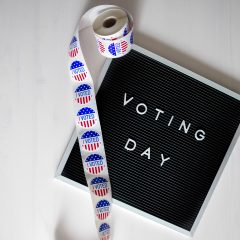Fred Prichard
SWA4
Senator Kamala Harris’ presentation of self on her website is mostly a person-to-person approach. The first thing shown on Kamala Harris’ website is a YouTube video which seems to be intended for the viewer to get to know her on a more personal level. For example, the video begins by her talking about how she was born in Oakland, CA and that her parents met in college and were active in the civil rights movement. She goes on to say that her mother, who was a scientist and activist, was one of her greatest inspirations in life. She then says, “I was taught that I had a responsibility to be a part of the fight for justice. And that’s what I’ve done my whole life” Through explaining her upbringing, and how her values were formed as a result, Kamala is presenting herself on a personal level. Kamala sets herself apart from other candidates by providing information on the “meet Kamala” section about legislation she introduced or co-sponsored and cases she worked as an Attorney General in California. The opening statement on this section is “Throughout her career, Kamala has been a fearless advocate for the voiceless and vulnerable and a vocal and determined fighter on behalf of all people.” This notion of Kamala’s interests being “for the people” is reinforced by her campaign slogan, which is “Kamala Harris For the People.” This slogan reflects her personal characteristic of wanting to help people from all aspects of life. Kamala Harris’ website is visually appealing. The red, white, and blue color scheme is easy to look at, and represents America. However, there is very few pictures on the website other than of Kamala standing at a podium smiling.
Similar to Kamala Harris, Senator Cory Booker’s presentation of self on his website is mostly a person-to-person approach. He too talks about his upbringing in order to connect with his audience in a more personalized manner. In the YouTube video on his website, the first line is “In America we have a common pain, but what we are lacking is a sense of common purpose” then cuts to him walking in the streets of the city he lives in wearing informal clothes (hooded sweatshirt). We then hear his person-to-person approach when a stranger (presumably) yells out “Cory!” then he responds, “What’s up!” The stranger the says “2020” to which Cory responds “Amen!” This brief and informal exchange highlights his homestyle/person-to-person approach of walking the streets of the city he lives and casually interacting with the people there within it. He goes on to discuss how, as a child, his parents tried to move him into a neighborhood with good public schools but were discriminated against because of the color of their skin. Through bringing up this discrimination Cory faced early on, he is setting the stage to speak about how he moved to the inner city of Newark and spent his career “to fight slumlords and help families stay in their homes.” He then says he still lives there and is “the only senator to go home to a low-income, inner-city community, the first community that took a chance on me.” Through this homestyle language, Cory is presenting himself as someone who continues to fight for his marginalized community instead of abandoning it. Similar to Kamala’s website, Cory presents information about his background and family, which allows for the audience to get to know him on a more personalized level. Additionally, both candidates have the option to view the website in Spanish, which highlights their ideals of working for immigrant communities.
Some media, such as theroot.com present Kamala as someone who had been “aggressively pursuing criminals in every sector except for police and prosecutorial misconduct.” The article explains that she had even fought against forcing cops to wear bodycams across the state of California. Additionally, this media outlet claims that “as a prosecutor, Harris refused to hand over the names of officers involved in police misconduct.” These notions are contrary to Kamala Harris’ presentation of self on her website as being someone seeking justice for the people. The media attention around Cory Booker, however, reinforces notions represented on his website of his homestyle approach. On thedailybeast.com is an article about 9 times he’s “saved the day.” The article includes stories about how he rescued an elderly lady from a burning building, personally shoveled snow from people’s driveway, and even saved a dog from freezing to death. These personalized actions by Cory Booker show his strong commitment to his community.
Resources:
Kamalaharris.org
Corybooker.com
theroot.com
thedailybeast.com
